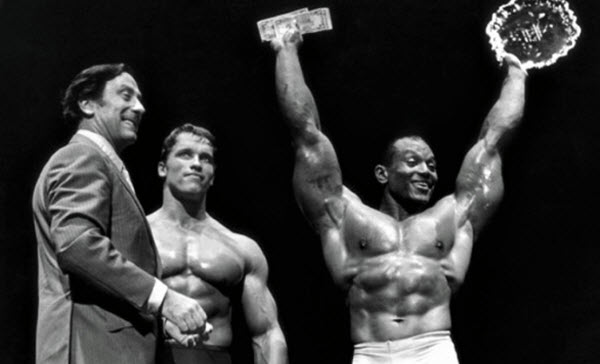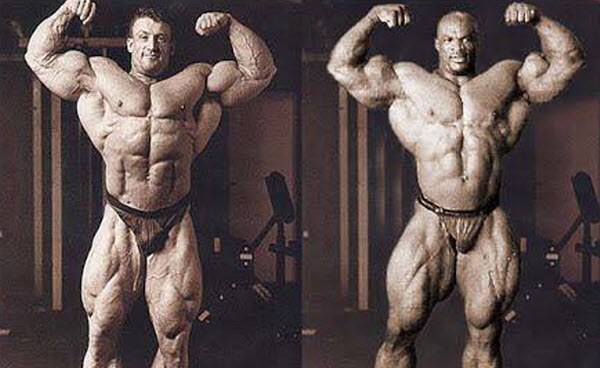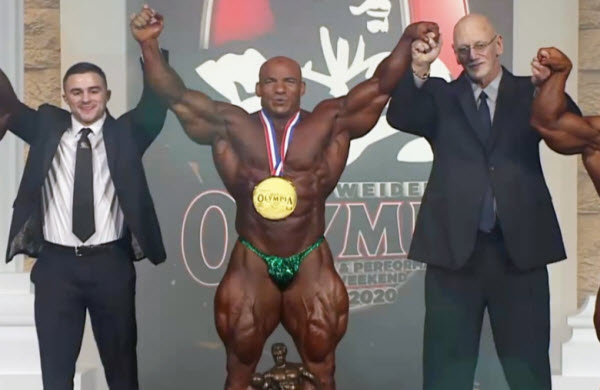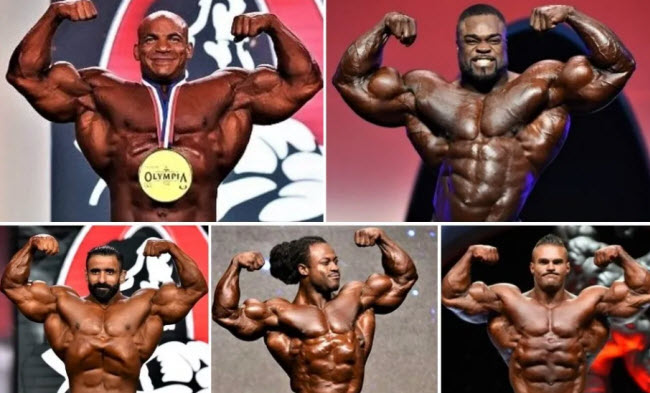If the FIFA World Cup is the pinnacle of football, then Mr. Olympia is its equivalent in bodybuilding. It is an international competition held annually under the auspices of the International Federation of Bodybuilding and Fitness (IFBB). The event was created by Canadian bodybuilder Joe Weider to provide a platform for the winners of the Mr. Olympia competition to continue competing and earning money. The inaugural event was held in the mid-1960s in New York City, USA. The first champion was Larry Scott, who won the first two editions consecutively. Due to the fame of this competition, it eventually led to the creation of other notable events such as Miss Olympia for women and Mr. Olympia for amateurs. Prominent champions include the global actor Arnold Schwarzenegger, Ronnie Coleman, and Egyptian bodybuilder Mamdouh Elssbiay, known as Big Ramy, who became the second Arab athlete to win and the first to win it twice consecutively.
The creation of the Mr. Olympia competition is credited to Canadian Joe Weider, a bodybuilder and businessman who co-founded the IFBB with his brother Ben Weider. He established the competition to ensure that world champions could continue to compete and earn money. The first event took place on September 18, 1965, at the Brooklyn Academy of Music in New York City. Larry Scott, who became the first Mr. Olympia champion, won the inaugural event and retained his title the following year. Scott’s career is notable as he is the only champion who never lost the title to another competitor. During the 1960s, Harold Poll emerged as the youngest competitor ever at 21 years old, and he was the only athlete to compete in all its preliminary events.
The Mr. Olympia competition took a new turn in 1967 when Cuban competitor Sergio Oliva, known as “The Myth,” won the title with massive muscle mass and impressive presentations. He retained his title for the next two years, 1968 and 1969, and was the only one to defeat the future iconic American bodybuilder and actor Arnold Schwarzenegger. Schwarzenegger went on to dominate the competition from 1970 until his retirement in 1975. During the mid-1970s to early 1980s, new competitors emerged, including Italian Franco Columbu, who won in 1976, and American Frank Zane, who won three consecutive times, along with Lou Ferrigno and Serge Nubret.

In the early 1980s, Arnold Schwarzenegger returned to competition after a five-year hiatus and won the title in 1980. Schwarzenegger, who was supposed to be busy filming “Conan,” entered the competition late, which confused his competitors. His seventh victory was particularly controversial as many felt he lacked sufficient muscle mass compared to Chris Dickerson and Mike Mentzer. This led several competitors to boycott the event the following year, and Mentzer retired. In 1983, Lebanese bodybuilder Samir Bannout won, becoming the first Arab to secure the title. Also during this period, American Lee Haney won the title eight times consecutively, becoming the most successful competitor in the event’s history.
In the 1990s, British bodybuilder Dorian Yates won the competition six times consecutively from 1992 to 1997, revolutionizing the sport with his massive physique. He retired after his last victory due to injuries, and Ronnie Coleman took over. During this period, reports surfaced about bodybuilders using growth hormones, leading many journalists to question if competitors, particularly Coleman, were using such substances. Coleman set a record with eight consecutive victories, tying with Lee Haney. Coleman had been in ninth place in Yates’ last win and showed significant improvements in his physique within a year. In 1994, the Masters Olympia was introduced as a separate event for top-level competitors.

In the new millennium, Ronnie Coleman attempted to break the shared record with Lee Haney in 2006 but failed to defend his title, finishing second to Jay Cutler, who won his first title after four consecutive second-place finishes. Cutler successfully defended his title in 2007, with Coleman finishing fourth and announcing his retirement, marking the end of a significant era. In 2008, Dexter Jackson defeated Cutler but lost the title back to Cutler in 2009.
Starting in 2016, a new category, Classic Physique, was introduced at Mr. Olympia, with Danny Hester as the inaugural champion. By 2017, Phil Heath won the title for the seventh time in a row, tying with Arnold Schwarzenegger but still behind Lee Haney and Ronnie Coleman, who each won eight times. Mamdouh Elssbiay, known as Big Ramy, placed second in that year. In 2018, Heath lost his title to Jamaican Shawn Rhoden, ending Heath’s seven-year streak. The same year saw the introduction of the Wheelchair Olympia for disabled athletes. In 2020, Heath returned but lost to Egyptian Mamdouh Elssbiay, who retained the title in 2021 before losing it to Iranian Hadi Choopan in 2022.

To compete in Mr. Olympia, the IFBB selects competitors from among the highest-ranked athletes in various qualifying events, collectively known as the Olympia Qualification Season, which lasts a year and ends a few months before the competition. According to updated qualification rules announced by the IFBB in 2019, competitors must meet one of the following criteria to qualify for most categories:
- Be among the top five in the previous Mr. Olympia competition.
- Win any IFBB-sanctioned qualifying event.
- Rank among the top three in total points from second to fifth places in qualifying events.
For certain categories, there are more than 25 qualifying events with slightly different rules. The previous Mr. Olympia winner automatically qualifies, as do winners of each qualifying event and the top five in total points.
The Mr. Olympia Amateur competition is a global event for top amateur competitors, providing them with the opportunity to become professional bodybuilders and compete in the main Mr. Olympia competition. According to the official website, as of March 2022, the event is held in countries around the world, including Pakistan, Eastern European countries, China, Spain, Portugal, Brazil, South Korea, Italy, Japan, South American countries, India, and the United States.
Table of Mr. Olympia Events by Year and Winner:
| Year | Champion |
|---|---|
| 1965 | Larry Scott |
| 1966 | Larry Scott |
| 1967 | Sergio Oliva |
| 1968 | Sergio Oliva |
| 1969 | Sergio Oliva |
| 1970 | Arnold Schwarzenegger |
| 1971 | Arnold Schwarzenegger |
| 1972 | Arnold Schwarzenegger |
| 1973 | Arnold Schwarzenegger |
| 1974 | Arnold Schwarzenegger |
| 1975 | Arnold Schwarzenegger |
| 1976 | Franco Columbu |
| 1977 | Frank Zane |
| 1978 | Frank Zane |
| 1979 | Frank Zane |
| 1980 | Arnold Schwarzenegger |
| 1981 | Arnold Schwarzenegger |
| 1982 | Arnold Schwarzenegger |
| 1983 | Samir Bannout |
| 1984 | Lee Haney |
| 1985 | Lee Haney |
| 1986 | Lee Haney |
| 1987 | Lee Haney |
| 1988 | Lee Haney |
| 1989 | Lee Haney |
| 1990 | Lee Haney |
| 1991 | Lee Haney |
| 1992 | Dorian Yates |
| 1993 | Dorian Yates |
| 1994 | Dorian Yates |
| 1995 | Dorian Yates |
| 1996 | Dorian Yates |
| 1997 | Dorian Yates |
| 1998 | Ronnie Coleman |
| 1999 | Ronnie Coleman |
| 2000 | Ronnie Coleman |
| 2001 | Ronnie Coleman |
| 2002 | Ronnie Coleman |
| 2003 | Ronnie Coleman |
| 2004 | Ronnie Coleman |
| 2005 | Ronnie Coleman |
| 2006 | Jay Cutler |
| 2007 | Jay Cutler |
| 2008 | Dexter Jackson |
| 2009 | Jay Cutler |
| 2010 | Jay Cutler |
| 2011 | Phil Heath |
| 2012 | Phil Heath |
| 2013 | Phil Heath |
| 2014 | Phil Heath |
| 2015 | Phil Heath |
| 2016 | Phil Heath |
| 2017 | Phil Heath |
| 2018 | Shawn Rhoden |
| 2019 | Brandon Curry |
| 2020 | Mamdouh Elssbiay |
| 2021 | Mamdouh Elssbiay |
| 2022 | Hadi Choopan |
